
The White City: Arequipa Region, Peru
Discover the White City of Arequipa, Peru, where colonial history, volcanic landscapes, and rich culinary traditions come together for an unforgettable adventure.
Arequipa, known as 'The White City' due to its stunning colonial architecture made from white volcanic stone, offers a unique blend of history, culture, and natural beauty. The city sits at the foot of the towering El Misti volcano, creating a picturesque backdrop for exploration. In Arequipa, you can wander through the historic center, a UNESCO World Heritage site, where you will find charming streets, plazas, and churches. The Santa Catalina Monastery, a city within a city, is a must-see with its colorful walls and peaceful courtyards. The Plaza de Armas, with its grand cathedral, is the heart of the city and a great place to start your journey. Beyond the city, the Arequipa Region offers stunning landscapes and outdoor adventures. The Colca Canyon, one of the deepest canyons in the world, is a haven for trekkers and nature lovers. Here, you can spot the majestic Andean condor soaring through the skies. Don't miss the chance to visit the Salinas y Aguada Blanca National Reserve, where you can witness diverse wildlife and breathtaking scenery. The Arequipa Region is also famous for its cuisine. Savor local dishes such as rocoto relleno (stuffed spicy pepper) and chupe de camarones (shrimp soup) at one of the many picanterías. The region's rich culinary traditions are sure to delight your taste buds.
Local tips in Arequipa Region
- Acclimatize to the altitude before embarking on treks or hikes.
- Visit the Santa Catalina Monastery early in the morning to avoid crowds.
- Try local dishes at traditional picanterías for an authentic culinary experience.
- Bring sunscreen and a hat; the sun can be intense in Arequipa.
- Hire a local guide for a more informative experience when visiting the Colca Canyon.
The White City: Arequipa Region, Peru
Arequipa, known as 'The White City' due to its stunning colonial architecture made from white volcanic stone, offers a unique blend of history, culture, and natural beauty. The city sits at the foot of the towering El Misti volcano, creating a picturesque backdrop for exploration. In Arequipa, you can wander through the historic center, a UNESCO World Heritage site, where you will find charming streets, plazas, and churches. The Santa Catalina Monastery, a city within a city, is a must-see with its colorful walls and peaceful courtyards. The Plaza de Armas, with its grand cathedral, is the heart of the city and a great place to start your journey. Beyond the city, the Arequipa Region offers stunning landscapes and outdoor adventures. The Colca Canyon, one of the deepest canyons in the world, is a haven for trekkers and nature lovers. Here, you can spot the majestic Andean condor soaring through the skies. Don't miss the chance to visit the Salinas y Aguada Blanca National Reserve, where you can witness diverse wildlife and breathtaking scenery. The Arequipa Region is also famous for its cuisine. Savor local dishes such as rocoto relleno (stuffed spicy pepper) and chupe de camarones (shrimp soup) at one of the many picanterías. The region's rich culinary traditions are sure to delight your taste buds.
When is the best time to go to Arequipa Region?
Iconic landmarks you can’t miss
Plaza de Armas Arequipa
Explore the enchanting Plaza de Armas Arequipa, a historical landmark filled with culture, stunning architecture, and vibrant local life in Peru.

Yanahuara Scenic Overlook
Discover the stunning panoramas of Yanahuara Scenic Overlook, where breathtaking views and cultural richness await every traveler.

Santa Catalina Monastery
Explore the serene beauty and rich history of Santa Catalina Monastery in Arequipa, Peru – a captivating destination for culture enthusiasts.

Sabandía mill
Explore the historical Sabandía Mill in Arequipa, Peru, a charming colonial site with stunning architecture and breathtaking landscapes.

Colca Canyon
Explore the stunning Colca Canyon in Peru, a breathtaking natural wonder with rich wildlife, cultural heritage, and spectacular landscapes.
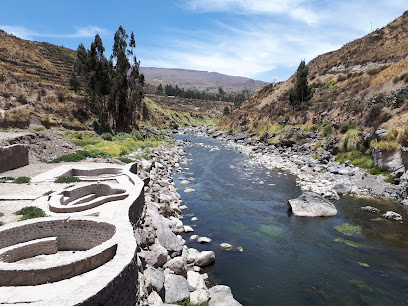
Puente Grau
Experience the captivating beauty of Puente Grau in Arequipa, an iconic bridge blending architecture and history with stunning views of the Andes.

Selva Alegre Park
Experience the tranquil beauty of Selva Alegre Park, Arequipa's lush green escape for relaxation, picnics, and family fun amid nature's splendor.

Reserva Nacional de Salinas y Aguada Blanca
Explore the stunning landscapes and diverse wildlife of Reserva Nacional de Salinas y Aguada Blanca, a breathtaking natural preserve in Arequipa, Peru.

Cloisters of The Company
Explore the breathtaking Cloisters of The Company, a historical gem in Arequipa showcasing exquisite architecture and rich cultural heritage.

Basilica Cathedral of Arequipa
Explore the stunning Basilica Cathedral of Arequipa, a masterpiece of baroque architecture and a symbol of the city's rich cultural heritage.

Mundo Alpaca
Explore the rich heritage of Peruvian alpaca textiles at Mundo Alpaca, a charming boutique and cultural landmark in Arequipa, Peru.

La Mansión del Fundador
Discover La Mansión del Fundador, where cultural heritage meets thrilling adventures in the heart of Jacobo Hunter, Peru.

Museo Santuarios Andinos
Explore the Museo Santuarios Andinos in Arequipa and uncover the ancient secrets of the Andean civilizations through captivating artifacts and exhibits.

Museo del Pisco AQP
Experience the rich heritage of Peru's national drink at Museo del Pisco AQP, where cocktails meet culture in a vibrant setting.

Mirador de Sachaca.
Experience the stunning panoramic views of the Peruvian landscape at Mirador de Sachaca, a must-visit observation deck for every traveler.

Unmissable attractions to see
Plaza de Armas Arequipa
Discover the vibrant Plaza de Armas in Arequipa, a historical landmark surrounded by stunning architecture and cultural experiences.

Yanahuara Scenic Overlook
Experience the stunning vistas of Arequipa and the majestic Misti Volcano at the Yanahuara Scenic Overlook, a top destination for breathtaking views.

Sabandía mill
Discover the historical charm of Sabandía Mill, a captivating tourist attraction in Arequipa showcasing traditional milling techniques amidst breathtaking landscapes.

Colca Canyon
Explore Colca Canyon, Peru - a stunning natural wonder with breathtaking views, rich culture, and unforgettable adventures in the heart of the Andes.

Plaza de Yanahuara
Explore the serene beauty of Plaza de Yanahuara in Arequipa, where stunning views meet rich culture and local charm.

Puente Grau
Explore Puente Grau in Arequipa, a stunning bridge that blends history, culture, and breathtaking views, perfect for unforgettable memories.

Selva Alegre Park
Explore the lush landscapes and tranquil atmosphere of Selva Alegre Park, a perfect retreat for nature lovers and families in Arequipa.

Canteras de sillar Añashuayco
Explore the breathtaking Canteras de Sillar Añashuayco in Cerro Colorado, a must-visit tourist attraction known for its stunning rock formations and rich architectural history.

Basilica Cathedral of Arequipa
Explore the breathtaking Basilica Cathedral of Arequipa, a stunning blend of Gothic and neoclassical architecture in the heart of Peru's cultural hub.

Mundo Alpaca
Explore the exquisite world of alpaca textiles at Mundo Alpaca, Arequipa's cultural gem showcasing the finest Peruvian craftsmanship.

Museo Santuarios Andinos
Explore the rich heritage of the Inca civilization at Museo Santuarios Andinos, home to extraordinary archaeological treasures and mummies.

Quebrada de Culebrillas
Explore the stunning rock formations and rich archaeological heritage of Quebrada de Culebrillas in Cerro Colorado, a must-visit destination for history enthusiasts.

Ruta del Sillar
Experience the breathtaking beauty of Ruta del Sillar, a stunning natural attraction showcasing unique volcanic rock formations near Cerro Colorado, Peru.

Parque Juan Pablo Vizcardo y Guzman
Discover tranquility at Parque Juan Pablo Vizcardo y Guzman, Arequipa's serene urban park offering lush gardens and a peaceful retreat from city life.

Casa Museo Mario Vargas Llosa
Discover the legacy of Nobel Prize-winning author Mario Vargas Llosa at his dedicated museum in Arequipa, a cultural gem of Peru.
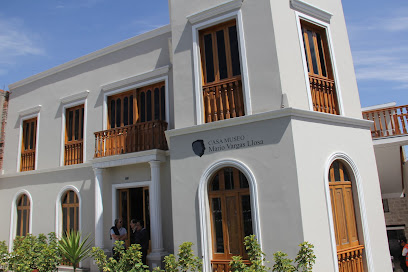
Essential places to dine
Tradición Arequipeña
Discover the heart of Peruvian cuisine at Tradición Arequipeña, where authentic flavors meet rich cultural traditions.

Tipika Tourist Restaurant
Discover authentic Peruvian cuisine at Tipika Tourist Restaurant in Arequipa - where every meal tells a story.

Zig Zag
Experience authentic Peruvian cuisine at Zig Zag Restaurant in Arequipa - where tradition meets taste in every dish.
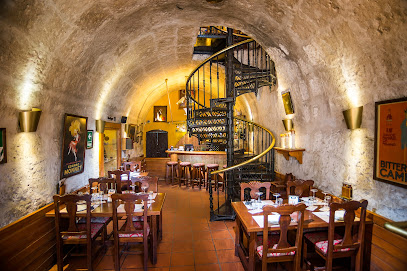
Chicha por Gaston Acurio
Experience authentic Peruvian cuisine at Chicha por Gaston Acurio in Arequipa - where tradition meets innovation for an unforgettable dining journey.

El Montonero - Restaurant Turístico
Discover authentic Peruvian cuisine at El Montonero - Restaurant Turístico in Arequipa, where tradition meets flavor in a cozy setting.

13 MONJAS
Discover an exquisite dining experience at 13 Monjas in Arequipa, blending traditional Peruvian cuisine with modern flair in a vibrant atmosphere.

Omphalos Restaurant Vegetariano -Vegano
Explore the vibrant flavors of vegetarian cuisine at Omphalos Restaurant in Arequipa – where health meets taste!

Restaurant Paisajista
Experience authentic Peruvian cuisine at Restaurant Paisajista in Arequipa – where traditional flavors meet modern hospitality.

Kao Thai and Peruvian Cuisine
Discover the exquisite blend of Thai and Peruvian flavors at Kao Thai and Peruvian Cuisine in Arequipa - a culinary adventure awaits!
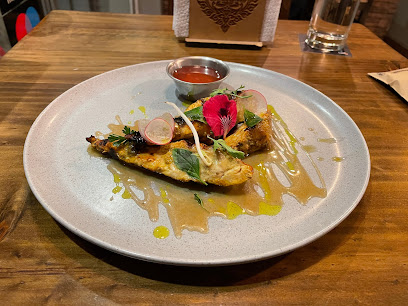
Tanta
Experience authentic Peruvian cuisine at Tanta in Arequipa - where traditional flavors meet modern dining.
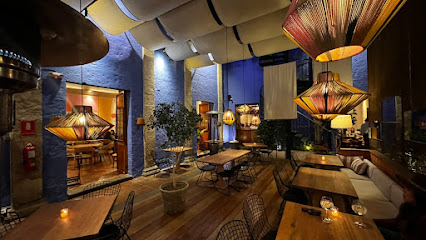
Zingaro Restaurante
Discover authentic Peruvian cuisine at Zingaro Restaurante in Arequipa—where every dish tells a story.

PRANA VEGAN CLUB
Experience exquisite vegan dining at PRANA VEGAN CLUB in Arequipa - where every dish celebrates health and flavor.

La Gran Reserva
Experience authentic Peruvian cuisine at La Gran Reserva in Arequipa – where tradition meets flavor in every dish.

El Fuego De San Antonio
Experience traditional Peruvian cuisine with a modern twist at El Fuego De San Antonio, Arequipa's premier gastropub destination.

MUMIS
Experience the best of Italian cuisine with a Peruvian twist at MUMIS, Arequipa's premier restaurant destination for food lovers.

Markets, malls and hidden boutiques
Mall Plaza Arequipa
Discover the ultimate shopping experience at Mall Plaza Arequipa, where retail, dining, and entertainment blend seamlessly in a vibrant atmosphere.

Parque Lambramani
Explore Arequipa's Parque Lambramani: A shopping haven with diverse dining options and thrilling entertainment for all ages.

Mercado San Camilo
Explore the bustling Mercado San Camilo in Arequipa, where vibrant local culture and delicious Peruvian cuisine come together in a unique market experience.

El Panorámico
Explore El Panorámico in Arequipa for an unforgettable shopping experience, featuring trendy clothing stores and delightful dining options.

Mundo Alpaca
Explore the cultural richness of Arequipa at Mundo Alpaca, where exquisite alpaca textiles meet artisan craftsmanship.

Fundo El Fierro
Explore the vibrant art and culture of Peru at Fundo El Fierro, a must-visit handicraft fair in Arequipa.

GALERIA DE IMPORTACIONES ASIA AREQUIPA
Explore the vibrant Galeria de Importaciones Asia Arequipa, where local culture meets shopping in a lively atmosphere filled with unique treasures.

TIENDA DE REGALOS IMÁGENES
Explore the heart of Arequipa through unique gifts and authentic Peruvian crafts at TIENDA DE REGALOS IMÁGENES.

Mercado Central.
Explore the lively Mercado Central in Arequipa for a taste of local culture, vibrant market stalls, and delicious traditional Peruvian cuisine.

Galería Colonial
Explore the vibrant Galería Colonial in Arequipa, a shopping haven for unique artisan crafts and local treasures reflecting Peru's rich cultural heritage.

Centro Comercial Real
Discover the ultimate shopping experience at Centro Comercial Real, where local culture meets modern retail in Arequipa.

Centro Comercial Union Mercaderes
Discover Arequipa's Centro Comercial Union Mercaderes, a vibrant shopping mall filled with local crafts, delicious dining, and exciting entertainment.

Casona San José
Discover the charm of Arequipa at Casona San José, a vibrant shopping mall offering a blend of local culture and modern retail experiences.

KUNA - Arequipa - Casona Santa Catalina
Explore KUNA in Arequipa: a clothing store blending contemporary fashion with traditional Peruvian craftsmanship, perfect for unique souvenirs.

Mossuto
Experience the perfect fusion of fashion and flavor at Mossuto, Arequipa's charming clothing store and café.

Essential bars & hidden hideouts
Museo del Pisco AQP
Experience the rich heritage of Peru's national drink at Museo del Pisco AQP, where cocktails meet culture in the heart of Arequipa.

Chelawasi Public House
Discover the vibrant Chelawasi Public House, where craft beers and exceptional espresso meet in the heart of Arequipa, Peru.

Frogs
Discover the vibrant nightlife of Arequipa at Frogs, where cocktails and live entertainment create unforgettable memories.

Qochamama
Experience the vibrant flavors of Arequipa at Qochamama, a top-notch grill and bar offering delicious dishes in a lively setting.

Nowhere
Experience the vibrant flavors of Arequipa at Nowhere Brewpub, a perfect blend of craft beers and local cuisine.

Carusso Restobar
Discover the vibrant culinary scene at Carusso Restobar in Arequipa, where delicious food and lively atmosphere come together for an unforgettable experience.

Farrens Irish BAR
Discover the vibrant atmosphere of Farrens Irish Bar, where delicious fast food meets Irish hospitality in the heart of Arequipa.

Mono Blanco
Unwind at Mono Blanco, Arequipa's charming bar offering a delightful selection of drinks and a cozy atmosphere for an unforgettable night out.

Peru Bar (pizzas & grill)
Discover the vibrant taste of Arequipa at Peru Bar, where delicious pizzas and grilled specialties meet a lively atmosphere.

Pataccala Bar
Discover the flavors of Arequipa at Pataccala Bar, a vibrant tapas bar offering a unique blend of local cuisine and craft brews in a welcoming atmosphere.

Melkim Draft Bar
Experience the best of Arequipa's craft beer scene at Melkim Draft Bar, where local flavors meet a cozy atmosphere.

VOITON bar & live sports
Discover VOITON Bar & Live Sports in Arequipa: a vibrant cocktail bar and sports haven serving delicious burgers and a lively atmosphere.

LUCKY AND CRAZY Beer and grill
Discover the vibrant taste of Arequipa at LUCKY AND CRAZY Beer and Grill, where grilled delights and local brews await every visitor.

Furtiva Speakeasy Bar
Discover Furtiva Speakeasy Bar in Arequipa for crafted cocktails and a cozy atmosphere that brings a taste of the classic speakeasy experience.

INSIDE BAR ROCK
Unwind and immerse yourself in Arequipa's nightlife at Inside Bar Rock, where vibrant music meets delicious drinks.

Local Phrases about Arequipa Region
-
- HelloKamusta
[ka-mus-ta] - GoodbyePaalam
[pa-a-lam] - YesOo
[o-o] - NoHindi
[hin-di] - Please/You're welcomePakiusap
[pa-kiu-sap] - Thank youSalamat
[sa-la-mat] - Excuse me/SorryPaumanhin
[pau-man-hin] - How are you?Kamusta ka?
[ka-mus-ta ka?] - Fine. And you?Mabuti. Ikaw?
[ma-bu-ti. i-kaw?] - Do you speak English?Marunong ka mag-Ingles?
[ma-ru-nong ka mag-in-gles?] - I don't understandHindi ko maintindihan
[hin-di ko main-tin-di-han]
- HelloKamusta
-
- I'd like to see the menu, pleaseGusto ko makita ang menu, pakiusap
[gus-to ko ma-ki-ta ang me-nu, pa-kiu-sap] - I don't eat meatHindi ako kumakain ng karne
[hin-di a-ko ku-ma-ka-in ng kar-ne] - Cheers!Tagay!
[ta-gai] - I would like to pay, pleaseGusto ko magbayad, pakiusap
[gus-to ko mag-ba-ya-ad, pa-kiu-sap]
- I'd like to see the menu, pleaseGusto ko makita ang menu, pakiusap
-
- Help!Tulong!
[tu-long] - Go away!Lumayo ka!
[lu-ma-yo ka!] - Call the Police!Tawag sa pulis!
[ta-wag sa pu-lis!] - Call a doctor!Tawag sa doktor!
[ta-wag sa dok-tor!] - I'm lostNawawala ako
[na-wa-wa-la a-ko] - I'm illMay sakit ako
[may sa-kit a-ko]
- Help!Tulong!
-
- I'd like to buy...Gusto ko bumili ng...
[gus-to ko bu-mi-li ng] - I'm just lookingNagtitignan lang ako
[nag-ti-tig-nan lang a-ko] - How much is it?Magkano ito?
[mag-ka-no i-to?] - That's too expensiveMasyadong mahal
[ma-sya-dong ma-hal] - Can you lower the price?Pwede bang bawasan ang presyo?
[pu-we-de bang ba-wa-san ang pres-yo?]
- I'd like to buy...Gusto ko bumili ng...
-
- What time is it?Anong oras na?
[a-nong o-ras na?] - It's one o'clockAlas una na
[a-las u-na na] - Half past (10)Alas dose y medya
[a-las do-se y med-ya] - MorningUmaga
[u-ma-ga] - AfternoonHapon
[ha-pon] - EveningGabi
[ga-bi] - YesterdayKahapon
[ka-ha-pon] - TodayNgayon
[nga-yon] - TomorrowBukas
[bu-kas] - 1Isa
[i-sa] - 2Dalawa
[da-la-wa] - 3Tatlo
[tat-lo] - 4Apat
[a-pat] - 5Lima
[li-ma] - 6Anim
[a-nim] - 7Pito
[pi-to] - 8Walo
[wa-lo] - 9Siyam
[siyam] - 10Sampu
[sam-pu]
- What time is it?Anong oras na?
-
- Where's a/the...?Nasaan ang...?
[na-sa-an ang...?] - What's the address?Anong address nito?
[a-nong ad-dress ni-to?] - Can you show me (on the map)?Pwede mo ba akong ipakita (sa mapa)?
[pu-we-de mo ba a-kong i-pa-ki-ta (sa ma-pa)?] - When's the next (bus)?Kailan ang susunod na (bus)?
[ka-i-lan ang su-su-nod na (bus)?] - A ticket (to ....)Isang ticket (papuntang ....)
[i-sang ticket (pa-pun-tang ....)]
- Where's a/the...?Nasaan ang...?
History of Arequipa Region
-
The Arequipa Region was originally inhabited by indigenous groups such as the Collaguas and the Cabanas. These ancient civilizations developed impressive agricultural terraces and irrigation systems, which can still be seen today. The region was part of the Inca Empire before the Spanish conquest, and the Incas left a significant cultural imprint, including architectural remnants and traditional practices.
-
Arequipa was officially founded on August 15, 1540, by Garcí Manuel de Carbajal, a Spanish conquistador, under the orders of Francisco Pizarro. The city was established in the fertile valley of the Chili River and became an important colonial settlement. The Spanish brought their architecture, religion, and customs, which blended with indigenous traditions to create a unique cultural tapestry.
-
The historic center of Arequipa is renowned for its colonial architecture, particularly its use of sillar, a white volcanic stone. Key landmarks include the Basilica Cathedral of Arequipa, the Church of La Compañía, and the Monastery of Santa Catalina. These structures, built with sillar, not only reflect Spanish colonial design but also the region's seismic history, as they were reconstructed after several earthquakes.
-
Arequipa played a significant role in the Peruvian struggle for independence from Spanish rule. The city was a hub of revolutionary activity and intellectual thought. One of the prominent figures was Mariano Melgar, a poet and patriot who joined the independence movement. His legacy is celebrated in Arequipa, contributing to the city's historical and cultural identity.
-
The city of Arequipa has a history of political activism, exemplified by the Arequipa Revolution of 1950. This uprising was a response to the central government's policies and economic conditions. The movement was significant in shaping modern Peruvian politics and highlighted Arequipa's role as a center of resistance and reform.
-
Arequipa's culture is richly expressed through its cuisine, known for its unique dishes and flavors. Traditional foods such as rocoto relleno (stuffed spicy pepper), chupe de camarones (shrimp chowder), and adobo are integral to the region's identity. The city is also famous for its picanterías, local eateries that serve traditional foods and have been a cornerstone of Arequipa's social life for centuries.
-
Arequipa hosts a variety of annual festivals that reflect its cultural heritage. The most notable is the Feast of the Virgin of Chapi, celebrated with pilgrimages, music, and dance. Other important events include the Anniversary of Arequipa's founding, characterized by parades and traditional performances, and the Yaraví singing contests, which preserve the region's musical traditions.
-
The Arequipa Region is located in a seismically active area, leading to several significant earthquakes throughout its history. The most devastating was the earthquake of 1868, which caused widespread destruction. Despite these challenges, the people of Arequipa have shown remarkable resilience, rebuilding their city each time and preserving its historic and cultural heritage.
Arequipa Region Essentials
-
Arequipa Region is accessible via Rodríguez Ballón International Airport (AQP) in Arequipa City. This airport offers domestic flights from Lima, Cusco, and other major Peruvian cities. International flights are less frequent, so connecting through Lima may be necessary. From Lima, the flight takes approximately 1.5 hours. Alternatively, you can take a long-distance bus from Lima, which takes around 15 to 17 hours. Bus companies such as Cruz del Sur and Oltursa provide comfortable options.
-
Arequipa City is well-connected by public transportation, including buses and colectivos (shared taxis). Taxis are also readily available and relatively inexpensive, but ensure they are registered or use ride-sharing apps like Uber for safety. For exploring the region, renting a car can be convenient, although road conditions can vary. Long-distance buses connect Arequipa to other destinations within the region and beyond, offering an affordable way to travel.
-
The official currency in Peru is the Peruvian Sol (PEN). Credit cards are widely accepted in hotels, restaurants, and larger stores in Arequipa City, but smaller establishments and rural areas may require cash. ATMs are plentiful in the city, but it is wise to carry some cash when traveling to more remote areas. Currency exchange services are available at the airport and in the city center.
-
Arequipa is generally safe for tourists, but like any city, it is important to take standard precautions. Avoid walking alone at night in less populated areas, and be cautious in neighborhoods such as Alto Selva Alegre and Miraflores, which have higher crime rates. Keep an eye on your belongings in crowded places, and use reputable taxi services. Always stay aware of your surroundings to avoid petty theft.
-
In case of emergency, dial 105 for police assistance or 116 for the fire department. Arequipa has several hospitals, including Hospital Regional Honorio Delgado and Clínica San Juan de Dios, which offer emergency medical services. It is advisable to have travel insurance that covers medical emergencies. Pharmacies are widely available for minor health issues.
-
Fashion: Do dress modestly, especially when visiting religious sites. Avoid wearing overly revealing clothing. Religion: Do respect local customs and traditions. Always remove your hat and keep your voice low when entering churches. Public Transport: Do be courteous and offer your seat to elderly passengers. Don’t eat or drink on public transport. Greetings: Do greet people with a handshake or a friendly 'hola'. A slight nod of the head is also a sign of respect. Eating & Drinking: Do try local dishes like rocoto relleno and chupe de camarones. Don’t refuse food or drink offered by hosts, as it can be considered impolite.
-
To experience Arequipa like a local, visit the San Camilo Market for fresh produce and local delicacies. Engage with locals, who are usually friendly and willing to share stories about the city's history and culture. Don’t miss visiting the historic Santa Catalina Monastery and exploring the Yanahuara District for stunning views of the city and the Misti Volcano. For a unique experience, take a cooking class to learn how to make traditional Peruvian dishes.
Trending Landmarks in Arequipa Region
-
Plaza de Armas Arequipa
-
Yanahuara Scenic Overlook
-
Santa Catalina Monastery
-
Sabandía mill
-
Colca Canyon
-
Puente Grau
-
Selva Alegre Park
-
Reserva Nacional de Salinas y Aguada Blanca
-
Cloisters of The Company
-
Basilica Cathedral of Arequipa
-
Mundo Alpaca
-
La Mansión del Fundador
-
Museo Santuarios Andinos
-
Museo del Pisco AQP
-
Mirador de Sachaca.
Nearby Cities to Arequipa Region
-
Things To Do in Puno
-
Things To Do in Cusco
-
Things To Do in Tacna
-
Things To Do in Machu Picchu
-
Things To Do in Arica
-
Things To Do in Copacabana
-
Things To Do in Ayacucho
-
Things To Do in Ica
-
Things To Do in La Paz
-
Things To Do in Iquique
-
Things To Do in Huancayo
-
Things To Do in Cochabamba
-
Things To Do in Lima
-
Things To Do in Uyuni
-
Things To Do in Potosi










